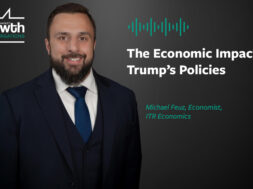Middle-Market Public Policy Roundup
Legal experts describe the new PE restrictions in the Federal Reserve’s Main Street Lending Program, the DOL clears PE investment in 401(k)s, and PPP reform heads to the president's desk.

In this week’s roundup, legal experts describe how new restrictions could prevent private equity-backed businesses from obtaining loans through the Federal Reserve’s Main Street Lending Program. We also look at news from the Department of Labor, which announced it would begin to make it easier for retirement plans to invest in private equity funds. And we explore legislation awaiting the president’s approval that would reform portions of the Paycheck Protection Program.
PE Faces Restrictions in Fed’s Main Street Lending Program
Private equity-backed companies seeking financial relief through a new Federal Reserve lending program could face some of the same difficulties presented by earlier federal aid initiatives.
The Federal Reserve Bank of Boston released additional guidance last week on the Main Street Lending Program, or MSLP. Among the changes to the program are newly added requirements that factor in the other companies in a PE firm’s portfolio.
The Small Business Administration’s Paycheck Protection Program included similar “affiliation rules” that became a major barrier for PE-backed businesses seeking federal relief.
Small PE firms might be able to obtain a loan for one company, up to the maximum loan size of $200 million. But that loan cap applies across the portfolio; the total amount of all loans received by companies within the portfolio cannot exceed the $200 million limit, according to Kristopher Ring, a partner in the private equity practice group at law firm Goodwin Procter.
The new rules could also prevent portfolio companies of a single PE firm from obtaining a loan from more than one of the MSLP’s three loan facilities: the New Loan Facility, Priority Loan Facility and Expanded Loan Facility.
The new rules suggest the MSLP’s debt-to-EBITDA ratio test could consider the leverage level of a PE firm’s portfolio collectively when evaluating whether a single applicant qualifies for a loan under the program. Businesses with leverage ratios above 6x are ineligible for a loan.
The updated rules also indicate that loan recipients will be subject to “onerous” reporting requirements, according to Ring. “It’s going to just be a lot of work for borrowers and lenders,” he says.
Fredrich Lim, another partner in Goodwin’s private equity practice, says the reporting requirements will be challenging for small companies in particular. “It’s almost counterintuitive,” he says. “If [the Fed is] targeting smaller companies that don’t have the infrastructure—like small mom-and-pop shops—they’re not going to be able to comply.”
That could prevent small and midsize companies from seeking loans through the program.
Meanwhile, strict requirements for lending institutions could delay the MSLP’s launch.
“Lenders just got all these documents thrown at them,” Ring says. “Integrating those requirements into their standard requirements systems that they already have uploaded is going to take some time.”
The Fed’s rules are not yet final, but it’s unclear whether the central bank will make revisions before the MSLP is launched.
DOL Submits Letter That Could Allow 401(k)s to Invest in PE
Private equity funds have long been part of the portfolios used to generate retirement benefits for many American workers, but they generally have not been incorporated into 401(k) plans. That could soon change, thanks to a recent move by the Department of Labor.
On Wednesday, the agency issued an information letter under the Employee Retirement Income Security Act, or ERISA, concerning private equity investments as a component of funds that could include 401(k) retirement plans.
The letter will help Americans saving for retirement gain access to alternative investments that often provide strong returns, Labor Secretary Eugene Scalia said.
“The Letter helps level the playing field for ordinary investors and is another step by the Department to ensure that ordinary people investing for retirement have the opportunities they need for a secure retirement,” he said in a statement.
401(k) plans generally use mutual funds, bank collective investment trusts and insurance company pooled accounts with portfolios focused on publicly traded stocks and bonds. The DOL’s letter addresses private equity investments offered as part of a professionally managed multi-asset class vehicle, structured as a target-date, target-risk or balanced fund.
Adding private equity investments to such professionally managed investment funds would increase the range of investment opportunities available to 401(k)-type plan options, the DOL said.
The information letter does not authorize making private equity investments available for direct investment on a standalone basis.
No federal law currently prohibits companies from including private equity in employee 401(k) plans, but litigation concerns have caused some hesitation. In February, the Supreme Court decided to hear a case involving a former employee at chipmaker Intel sued the company for violating its fiduciary duties when it invested a portion of its employees’ contributions in higher-fee investments that included private equity firms.
Josh Lichtenstein, a Ropes & Gray LLP partner, told The Wall Street Journal that the letter is a “big deal” and could be a boon to private equity sponsors.
Trump Expected to Sign PPP Extension
A bill revising the Small Business Administration’s Paycheck Protection Program cleared the Senate yesterday after a near-unanimous 417-1 vote. It is now headed to President Trump’s desk, where he is expected to sign the bill into law as early as today.
The legislation, titled the Paycheck Protection Flexibility Act, passed the House last week and gives business owners more flexibility and time to use loan money and still qualify for loan forgiveness as part of PPP.
The bill extends the coverage period from eight weeks to 24 weeks. It also lengthens the time period for businesses to rehire laid-off employees for the same amount of time.
The portion of loans that must be used for payroll from PPP would be reduced from 75% to 60% under the law.
The bill was originally proposed by Texas Republican Chip Roy and Minnesota Democrat Dean Phillips earlier this month and has since gained wide bipartisan approval from Democrats and Republicans in the House and Senate.

Benjamin Glick is Middle Market Growth’s associate editor.


